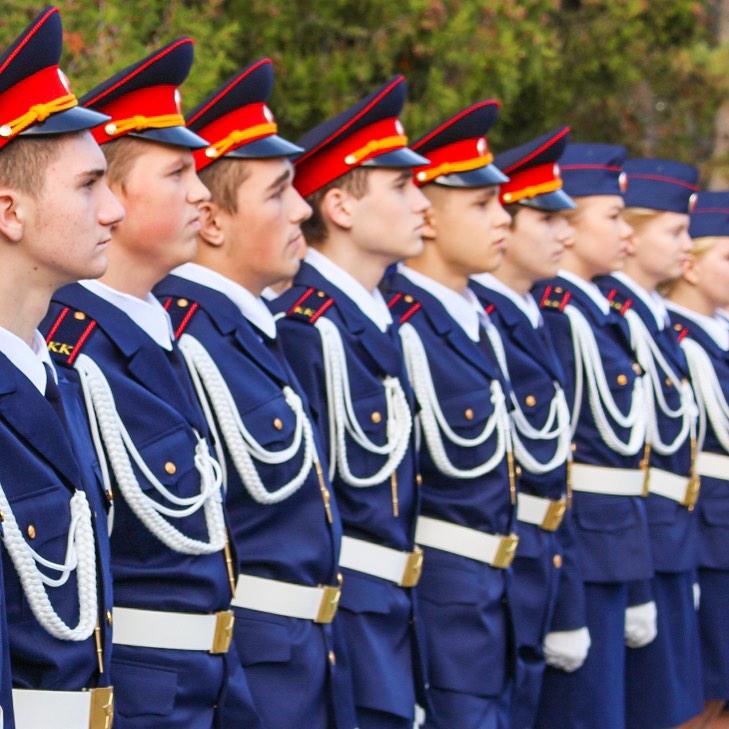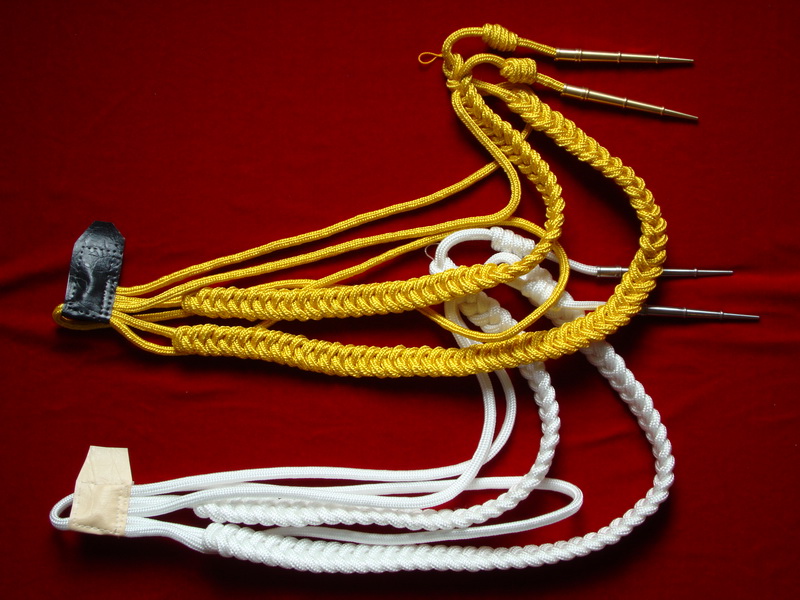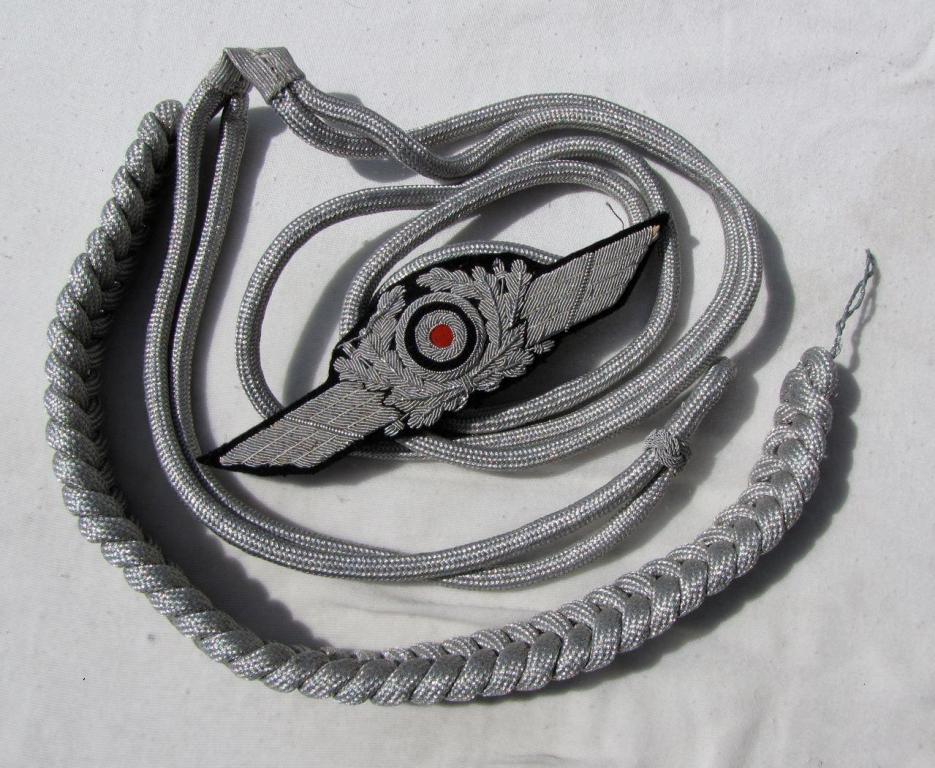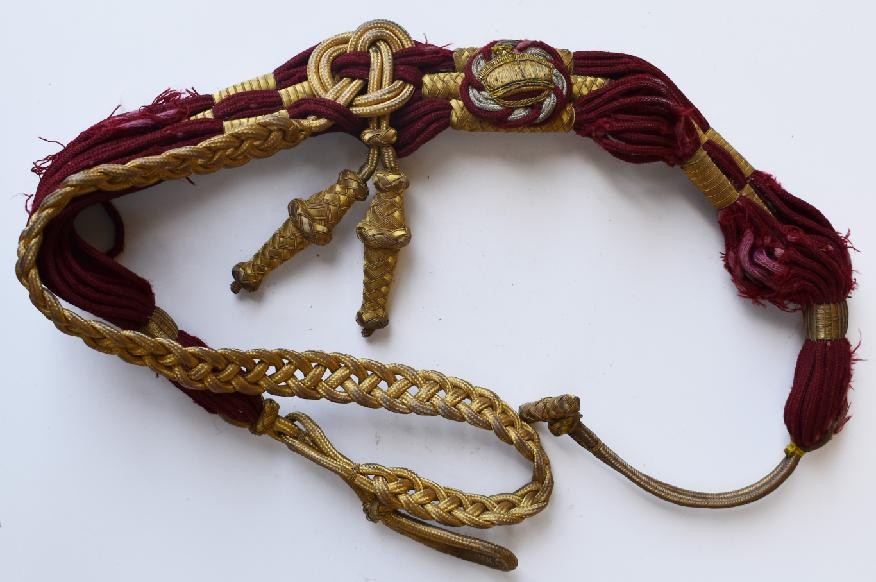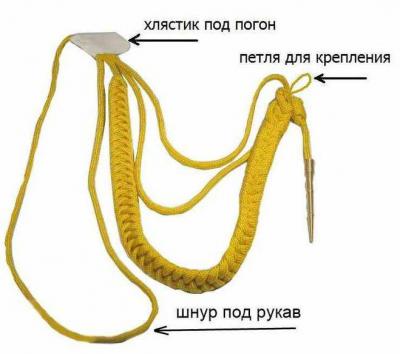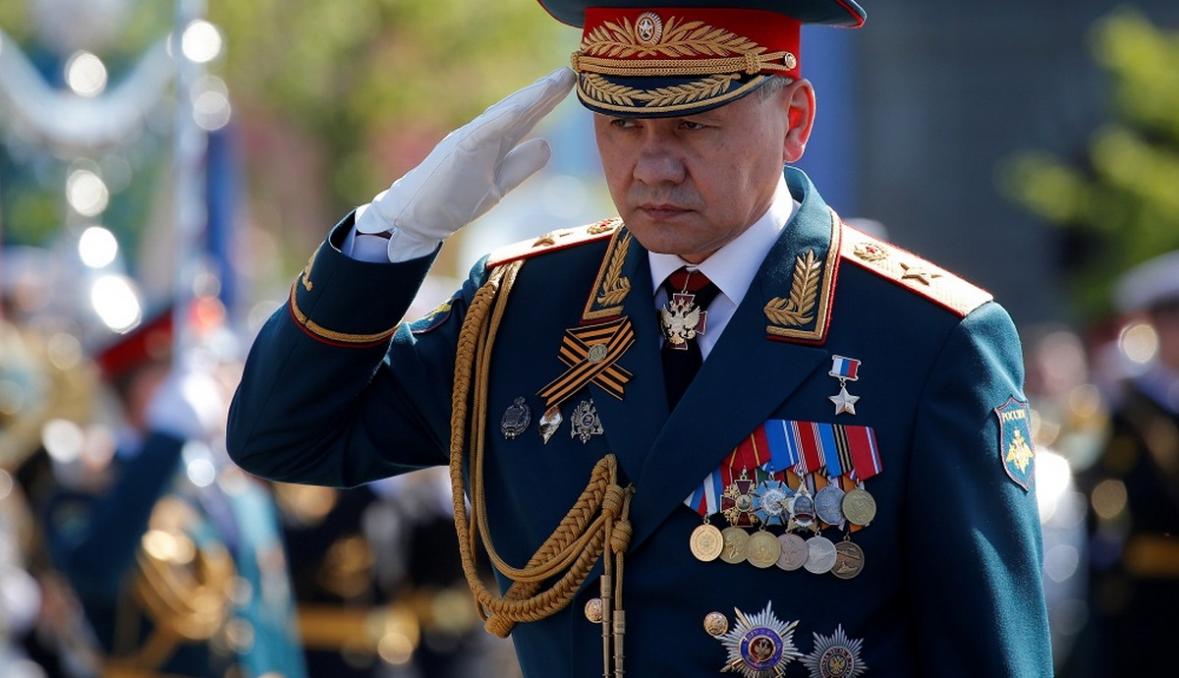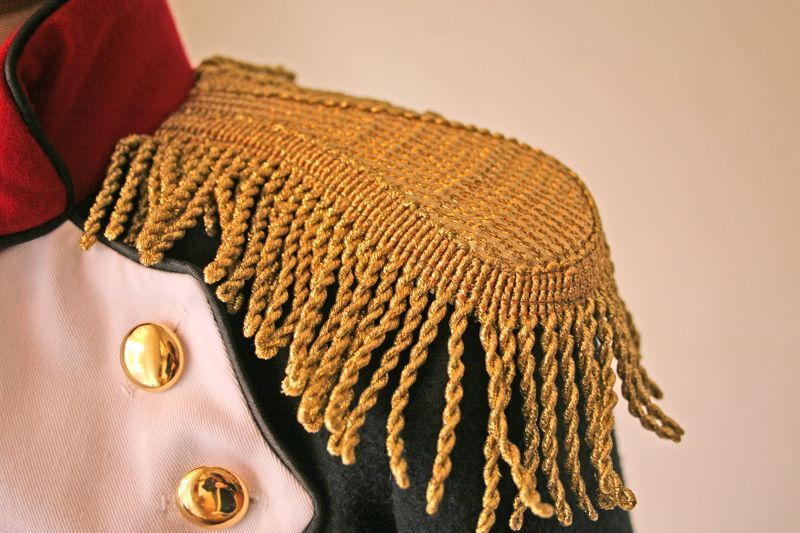Uniforms of a single type are mandatory in the army of any state. Therefore, conspicuous insignia acquire special significance. They can be used to determine affiliation with a group of troops, and in combat conditions, to unmistakably recognize a person who has the right to give orders. In the modern army, an aiguillette is not only a sign of distinction between privates and officers, but also an invariable attribute of the dress uniform. Previously, a colored cord with a metal tip also had a functional meaning, today it serves as a symbol, a sign of distinction of ranks, and a decoration of the uniform.
What is it
An aiguillette is a badge of distinction consisting of a braided cord and a metal tip. Presumably, it used to have a functional purpose. Now it is used as a decoration for uniforms, most often ceremonial military ones. The word "aiguillette" has German roots. The first part, achsel, translates as "shoulder" or "armpit", and the second word, band, means ribbon or braid. Although the aiguillette began to be worn by Western European military personnel only in the mid-17th century, its origin is not known for certain. There are several most likely versions:
- Engineering. The cord can be used for measurements, and the pencil tip can be used to make notes.
- Supply. Perhaps the aiguillette is nothing more than a forager's rope, and the metal tip was used for convenience. It helped to quickly tighten the loops on the carts with provisions.
- Rifle. When muskets appeared in the army's arsenal, riflemen carried a coiled match on their shoulders.
- Heroic. The Spanish governor in the Netherlands (1567-1573), the Duke of Alba, ordered the hanging of rebels who fought for independence and were captured. In response, the rebels began to wear rope loops with a nail on their shoulders so that the invaders could use them immediately in case of victory.
Aiguillettes appeared in the Russian uniform thanks to Peter III. They were introduced as insignia for infantry regiments - musketeers and grenadiers. After that, aiguillettes spread among other branches of the military and became an indispensable element of the ceremonial uniform.
A popular aphorism by Kozma Prutkov states: “There is no adjutant without an aiguillette.”
After the 1917 revolution, the Soviet government abolished the aiguillette, and returned it only after the military uniform was changed in 1971. At first, this attribute was given to the honor guard company and musicians of the Moscow garrison. Then it adorned the uniform of the military during the parade on Red Square dedicated to the October Revolution.
Varieties
Since the emergence of aiguillettes, there have been different types for wearing by privates and officers. They differed in the material from which the insignia was made:
- Officers' uniforms were decorated with silver-plated or gilded cords. Sometimes they were made from threads that included these precious metals.
- Soldiers and sailors were required to wear aiguillettes made of woven garus, a coarse, strong yarn made from low-quality cotton.
In modern armies, cords are made of tinsel, the color of which corresponds to a certain branch of the military. Materials consisting of precious metals are rarely used.
In the British Army, aiguillettes are divided into classes:
- Insignia made of gold wire are worn by the highest military ranks: marshals, admirals. The same is supposed to be attached to the right shoulder of doctors, surgeons, priests, stewards and aide-de-camp of the queen (king) who are attached to the royal family. On the left side, gold twisted cords are placed by officers of the palace cavalry when they put on a ceremonial uniform.
- The second class is given to members of the Defense Council and officer personnel of the territorial governors' apparatus. They wear on the right cords that combine gold and one of the colors that signify their affiliation with a certain branch of the armed forces: dark blue (Navy), crimson (ground forces), light blue (Air Force).
- The colours of the aiguillettes for regular officers depend on the branch of service. They are the same as for the second class, but the insignia is worn on the left shoulder.
- The fourth class aiguillettes are called simple. Guard musicians and corporals of the palace cavalry attach them to their ceremonial uniforms.
Non-statutory (demobilization) aiguillettes are often made independently by conscripts who are being discharged into the reserve. They usually make them from parachute lines and decorate them with tassels. Braided braids are most popular among those who served in the airborne troops.
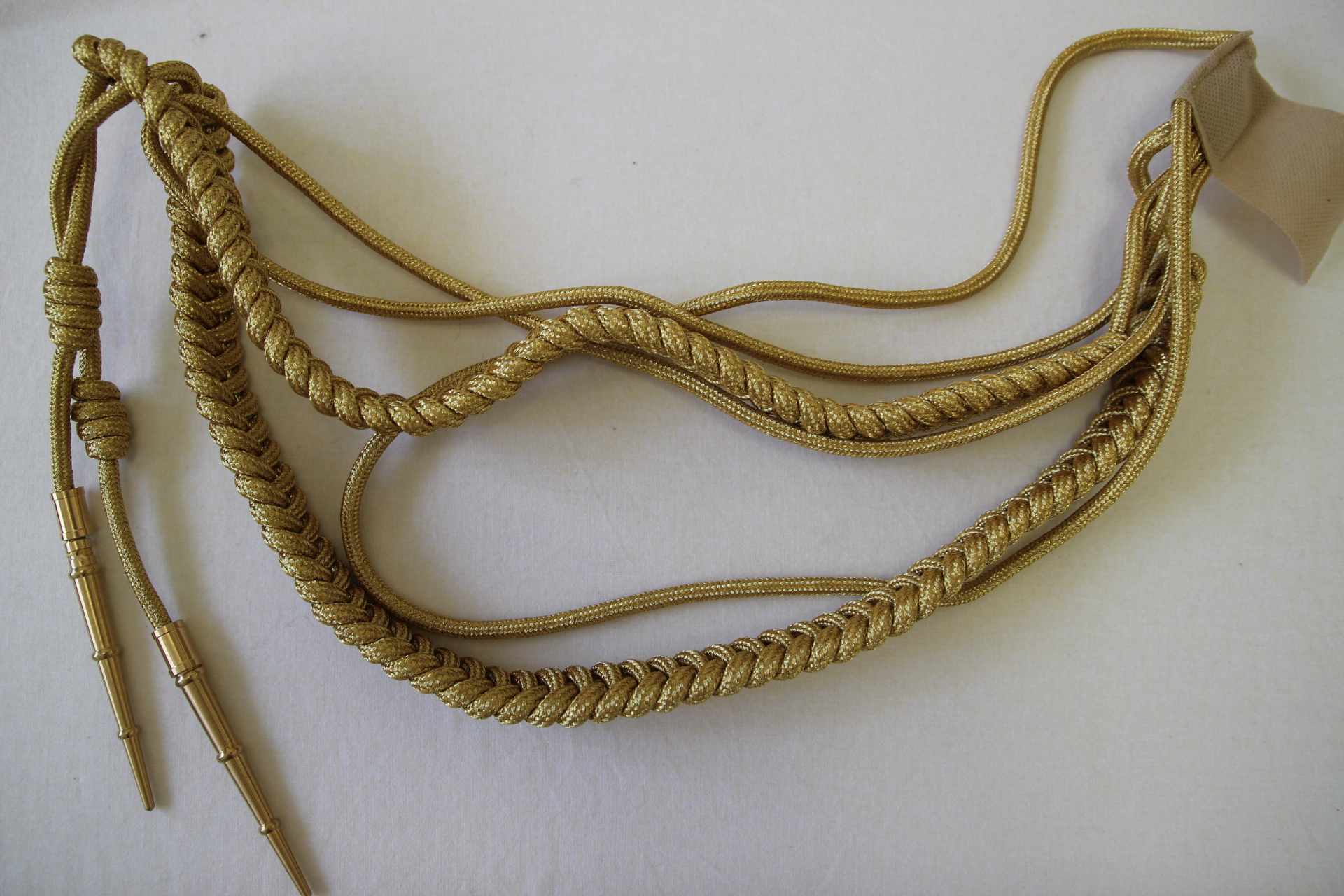
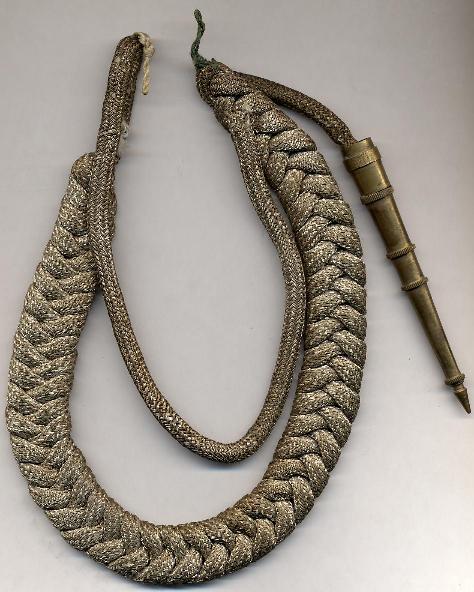
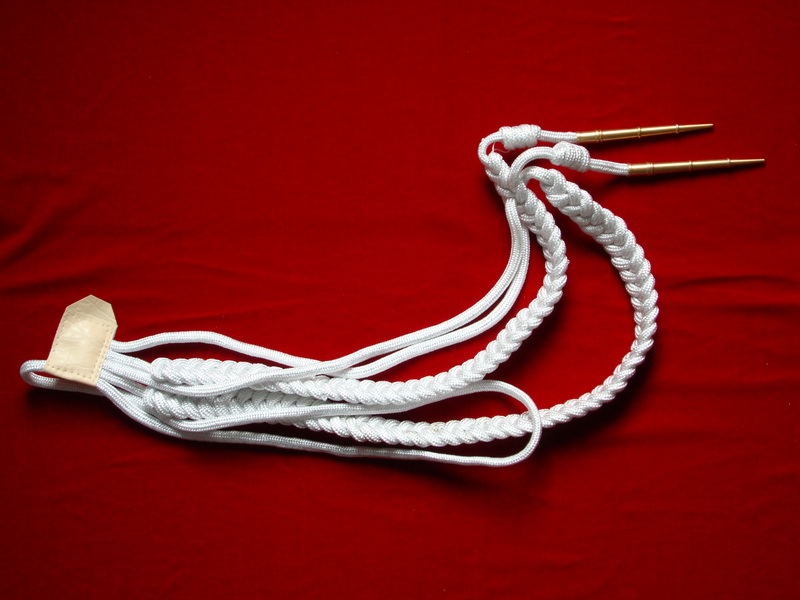
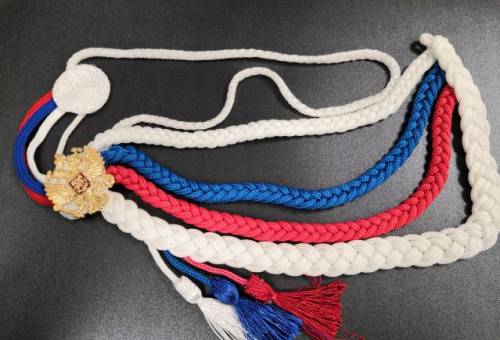
Who is it intended for?
In the Russian army, the purpose of the aiguillette did not change - it served as a sign of distinction and decoration of the dress uniform. But it is easy to get confused about who could wear it and when. Wearing the aiguillette before the revolution is reflected in detail in the table.
| Year | Troops | Chin | Color of the aiguillette |
| 1762-1780 | Battalions of Musketeers and Grenadiers | Officers, privates of the Life Guards, privates of the infantry, generals | Gold or silver, yellow, white |
| 1786 | Dragoon and Carabinieri Regiments, Light Horse Regiments | Privates, command staff | Yellow, silver, white |
| 1793 | Chuguev Cossack Regiments | All | White |
| 1794 | Horse artillery company | Officers | Gold |
| 1796 | Semenovsky Regiment, Dragoon Regiments | All generals, command staff, officers, lower ranks. Adjutants general, aide-de-camp | Gold, gilded or silver plated, according to the color of the buttons. |
| 1797 | Footguards | Officers | Gold |
| 1798 | Mounted police | All | They were recruited from other branches of the military and retained their old aiguillettes. |
| 1799 | Cavalry Guards Corps | It was formed only from nobles | Gold |
| 1800 | The Cavalry Corps was renamed a regiment and began accepting commoners. Jaeger (rifle) regiment | Officers, privates | On duty - gold. Off duty, a different uniform (a vice uniform) with a silver aiguillette was required. For privates - light orange |
| 1802 | Life Grenadier Regiment | Privates | Cancelled |
| 1809 | Life Grenadier Regiment | Officers | Abolished |
| 1827 | Special Corps of Gendarmes | Guards, officers | Yellow, silver |
| 1874 | All types of troops except commandant's | Adjutants, aide-de-camp, assistants to senior adjutants | By the color of the buttons |
| 1904 | Imperial retinue | All ranks | By button color |
| 1907 | Gendarmerie | Command staff, lower ranks | Silver, red, made of wool |
| 1908 | Commandant's troops | Adjutants, staff officers | In the color of the buttons |
| 1911 | City Gendarme Divisions | Lower ranks | Red wool threads, tin tip |
| 1911 | Guards squadrons, gendarmerie | Lower ranks | Yellow wool threads, red copper tip |
| 1911 | Field and staff gendarmerie | Lower ranks | Cord of white thread, tin tip |
In the Soviet army, after the return of aiguillettes, command staff wore a braided cord and two gold-colored tips on the right shoulder, while privates were given a silver one with a gold-colored metal tip.
Today, the Russian Federation's ceremonial military uniform requires wearing three types of aiguillettes:
- For rank and file personnel of all branches of the armed forces, a single braided white cord with a yellow metal tip is intended;
- Junior officers are entitled to an aiguillette made of a golden cord and a tip of the same color;
- The command staff wears a product in the form of a double golden cord with paired tips.
Among the official distinguishing marks and elements of the ceremonial uniform of the cadet corps, there are no aiguillettes. They are replaced by braid.
How to wear it correctly
It is clear what an aiguillette is, but how to wear it correctly is an interesting question and requires detailed consideration. Under the right shoulder strap of the dress uniform there should be a special valve for attaching the harness. It is easy to make yourself:
- the outer edge of the shoulder strap is ripped off;
- a strap is sewn on 0.5 cm from the shoulder seam;
- They return the shoulder straps back.
Two buttons are sewn on the jacket under the right lapel. The short front end of the aiguillette is fastened to the bottom. The long edge passes through the armpit and is attached to the top button. The metal tips hang freely on the chest, not reaching the belt.
Use in modern fashion
As a decorative element, aiguillettes are more often worn by women. In everyday clothes, metal brooches of different sizes are usually used, for example, the fashionable Viking Princess. This aiguillette brooch is made of ordinary and noble alloys.
Twisted cords and braided plaits in clothing are usually used as a glamorous decoration. They are made from various materials, often in bright colors. You can weave an aiguillette from long scarves or ribbons and attach it to a jacket or dress. To enhance the effect, a decorative shoulder strap or epaulette is sewn onto one shoulder.
With the military style back in fashion, decorative aiguillettes are worn not only by women, but also by men. Strict, laconic silhouettes are enlivened by a twisted cord or braid thrown over the shoulder. It can be of different lengths and thicknesses, plain or colorful, single or double.
The origin of the aiguillette is not exactly known. It has been used as an ornament and a sign of distinction in the ceremonial uniforms of many countries for almost four hundred years. Recently, this element has become a fashion accessory and has received the attention of world-famous designers.
Video





